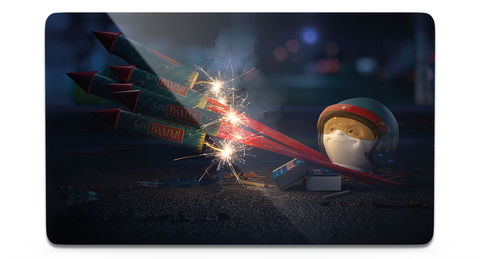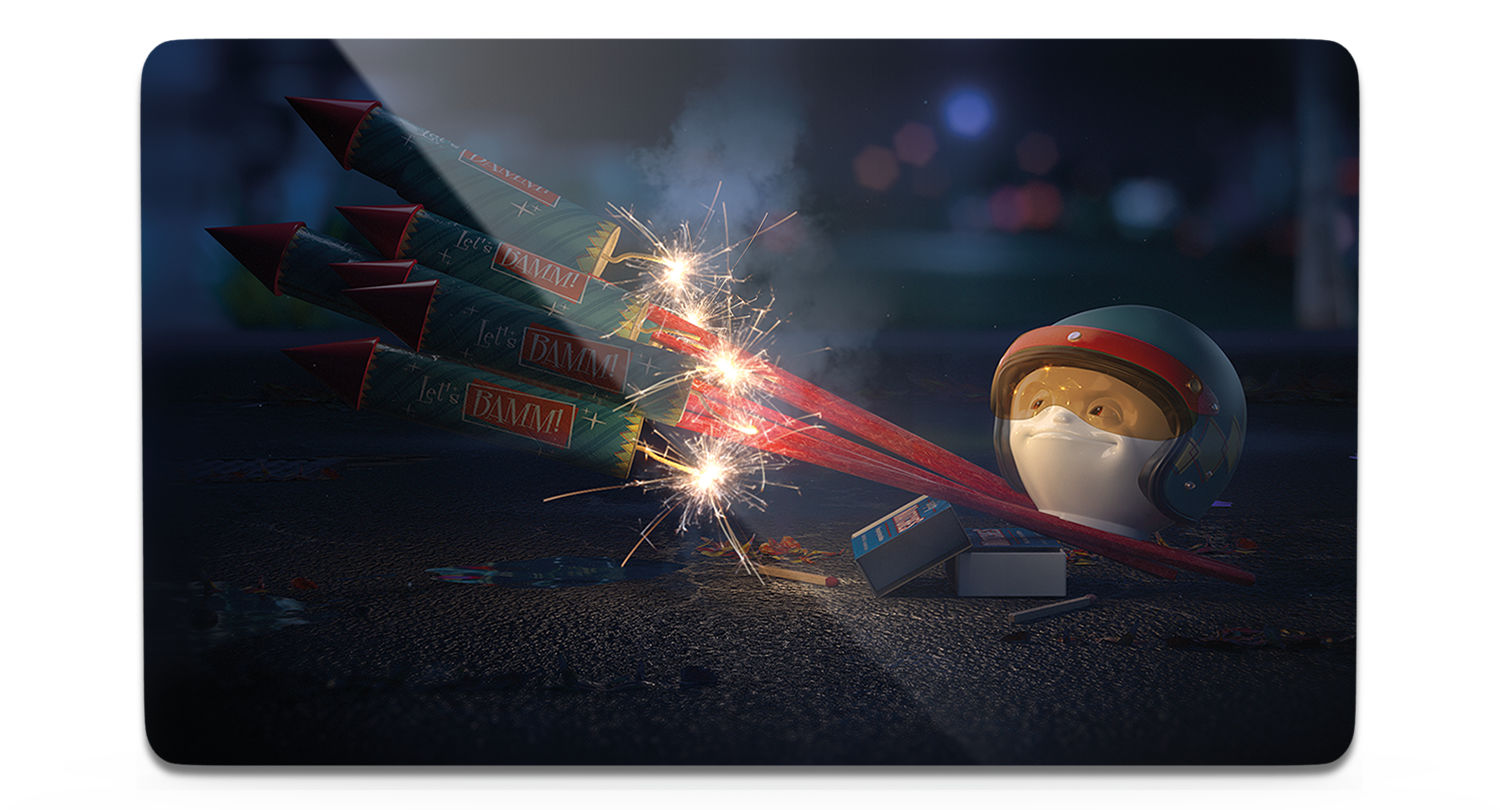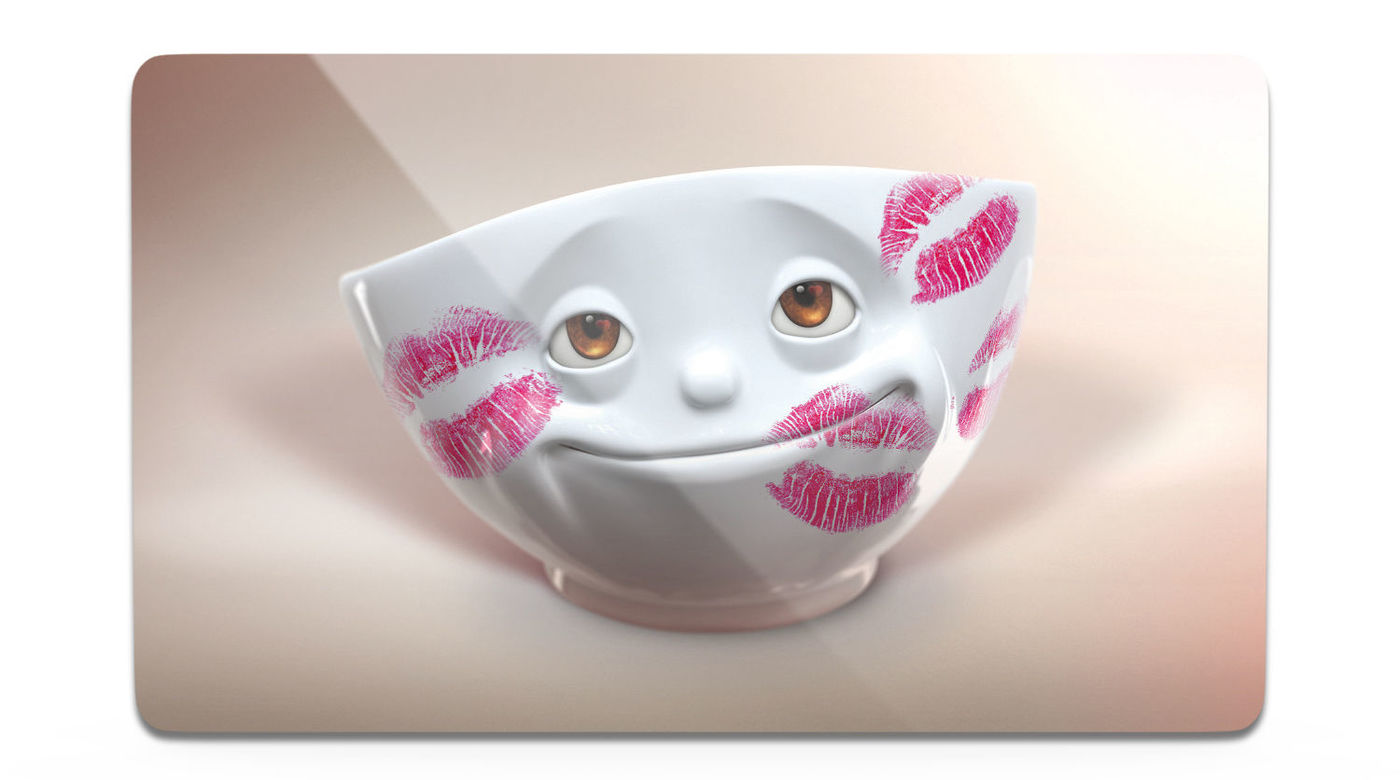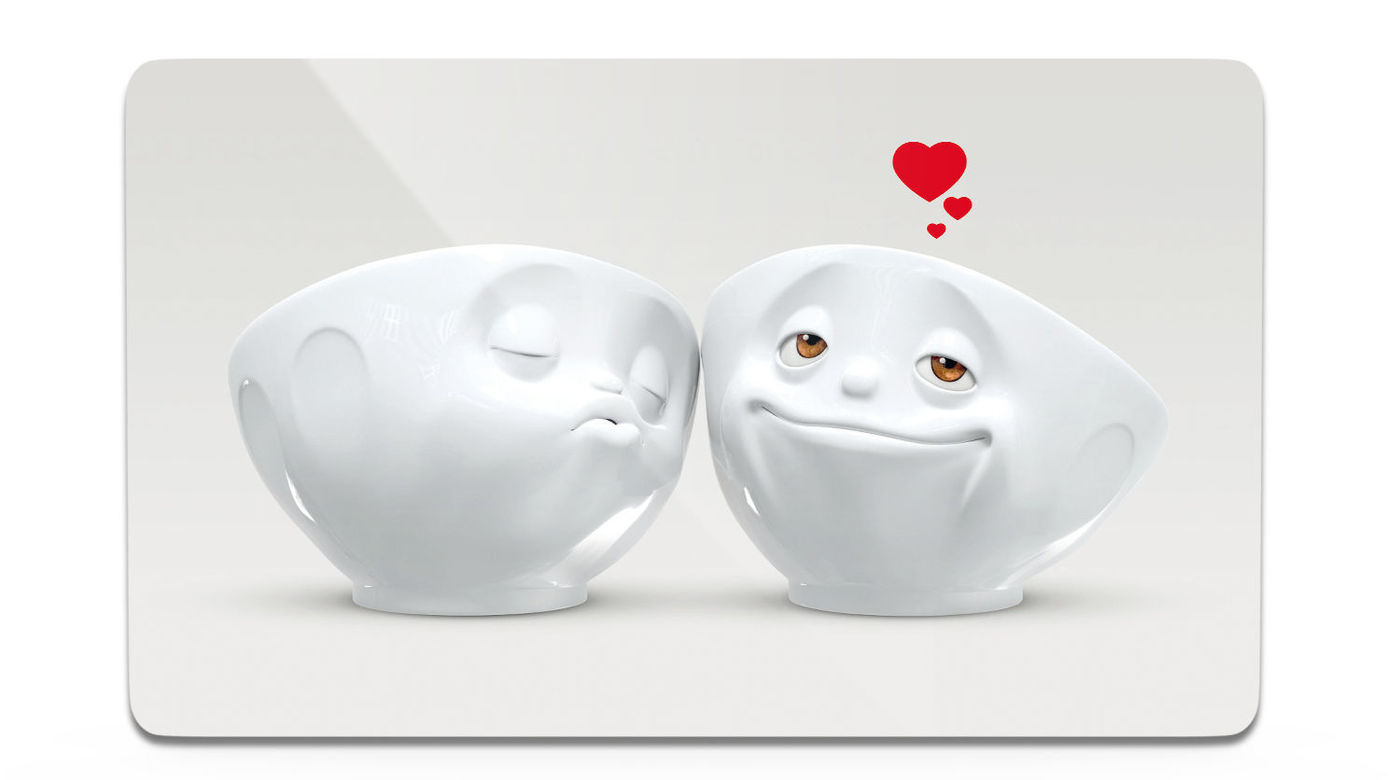Tavoletta colazione "Grazie"
9.99 € | (incl. 19% VAT) |
Cultural differences make the world go around. And we love it! For a global brand like FIFTYEIGHT, it’s always great to see the different use cases our customers in other countries will find for our products.
Like when we learned that folks in Japan like to use our TASSEN egg cups for drinking sake (to which we say, ‘Kanpai!’). Or how our little Jolly Jug serves the cream sauce for Swedish meatballs way up North.
But at the same time, we’re also very much a company based in Germany with some of the cultural sensibilities to match. Like our insistence on quality products “Made in Germany”. And also some of the product variations we sell, some of which may not instantly make sense to international audiences.

One of those cultural differences revolves around our colorful TASSEN breakfast boards.
While the desired use of these flat, thin and rectangular pieces of polymer is instantly recognizable to anyone who grew up in Germany, some of our worldwide clients tend to be puzzled by this product category.
“What the heck are we supposed to do with these breakfast boards?” they’ll ask.

And we’re always happy to answer, of course. In many cases, our international friends see the appeal of using a little board as an alternative to a plate.
But many may still have questions…
So to make things a bit simpler, here’s the backstory of the German tradition of breakfast boards and how they found their way into the FIFTYEIGHT PRODUCTS line-up.
 |
 |
Let’s start right at the beginning: What’s the purpose of these breakfast boards and what are they used for? In Germany, these little boards serve as substitutes for plates during meals. And not just any kind of meals, but “Bread Time” (Brotzeit).
Bread Time is dedicated to sliced bread (or pretzels and rolls) that’s served with a variety of accouterments. Similar to the Danish tradition of Smørrebrød, Germans like to top their bread with savory toppings. It’s a broad spread (see what we did there?) including dried sausage and cheese spreads (Bavaria) and even smoked fish and scrambled eggs (Northern Germany).
These mini sandwiches are eaten, not from a regular plate, but a compact little board made from wood or formica. The latter is a material introduced in the 1950s and serves as the material for TASSEN breakfast boards today.
Of course, there are no limits to how breakfast boards can be used. On our online store, they make for a great add-on item to supplement your gift order with an emotional message. Who doesn’t love an emotional KISSED Breakfast Board as a nice surprise from their special someone?
Some folks also like to display the breakfast boards in all their colorful glory in their kitchen as decorative items. Kids especially like a hot cup of cocoa and a nice peanut butter and jelly sandwich served on a breakfast board. And anyone studying hard for a test or exam will welcome a hot drink alongside some cookies served on a breakfast board for emotional support. The possibilities are truly endless…

Our good friend Canari.de stages a breakfast board in her recipe series TASTE OF FIFTYEIGHT. For new tasty recipes every week, check in on our Facebook.
The tradition of Brotzeit and family dinners were our main focus when it came to adding the Breakfast Boards to the TASSEN collection. As a material, we decided to go with the classic melamine introduced all the way back in 1950.
One major reason is that the melamine surface is food-safe, easy to clean and hygienic. What’s more, melamine retains its shiny surface for a long time and is impervious to heat and acidic liquids.
From an artistic perspective, the top layers of the Breakfast Boards can be covered in four-color print designs, which makes them the perfect art canvas for our designers here at FIFTYEIGHT PRODUCTS.
It’s important to point out that these are serving boards, on which you may add some spreads or toppings to your sliced bread. But they’re by no means cutting boards meant for slicing or cutting your foods in the kitchen.
Timm Osterhold, FIFTYEIGHT PRODUCTS Co-founder and CEO
Since launching the Breakfast Board collection more than 10 years ago, it’s safe to say that we had some fun with this versatile medium. Standouts include the cheeky CUPS DON’T CRY board, as well as classics such as the HAPPY NEW YEAH and BIG BANG editions. Not to forget countless Christmas-themed boards, as well as the evergreen design that is the HAPPY BIRTHDAY version.
In recent times, the HOPEFUL breakfast board has been keeping spirits high by depicting the PPE-wearing bowl of the same name. And hard to believe but true, the fan-favorite KISSED Breakfast Board with lipstick marks recently provided the inspiration for a Movie Edition bowl featuring colorful eyes. It’s great to see that something as traditional as breakfast boards still inspires new product innovation.

Speaking of tradition, “Abendbrot” (Evening Bread) has gained special prominence since the 1920s and the Industrial Revolution. As more and more workers started eating a hot lunch at their workplace, eating bread in the evening became an easy way to feed an entire family and spend time together without putting in too much effort in the kitchen.
As a special twist, Bread Time was served, not on a regular dining plate, but on small boards crafted from wood. And starting in 1950, a German company known as the Formica Corporation introduced a new, printable material for making these small boards: melamine. Crafted from layers of papers sandwiched between two outer layers of food-safe polymer, these new Bread Boards became a popular choice in households, especially because they were easy to clean.
Speaking on the appeal of this highly functional serving boards, Osterhold added: “I always enjoyed it tremendously. It was a nice change from the everyday to eat off these little boards instead of regular plates.”

The concept of little boards goes back to the German love for bread as a fundamental food, or “Grundnahrungsmittel” as we call it. While bread is often dismissed as a mere side dish (and filler) in other countries, it has been revered and celebrated in German culinary culture for centuries.
Why? One explanation goes back to the Judeo-Christian tradition, in which bread figures prominently in biblical stories and traditions like the rite of communion. What’s more, German agriculture is rich with different varieties of grains, while the art of bread baking is a time-honored craft in these parts.
As a result, the average German consumer today devours more than 85 kilos of bread per year. And with more than 300 bread varieties on sale in bakery stores across the country, Germany ranks number one in global bread tradition when it comes to diversity.

Now, people don’t simply eat this much bread – more than 230 grams per day a pop – when it’s just a side dish. For many Germans, at least one full meal per day is designated as Bread Time (“Brotzeit”). That’s when sliced bread in all shapes and sizes gets served with all kinds of toppings from cheeses to cold cuts to pickles and sandwich spreads.
So with that said, the Breakfast Boards may be a uniquely German tradition in our product collection. But we sincerely hope that they will spread the love for Bread Time, and eating supper together as a family, all across the world to our friends.
Who knows, they may even come up with their own alternative uses for our fun little bread boards? We’re curious to hear, please send us your Bread Time stories!